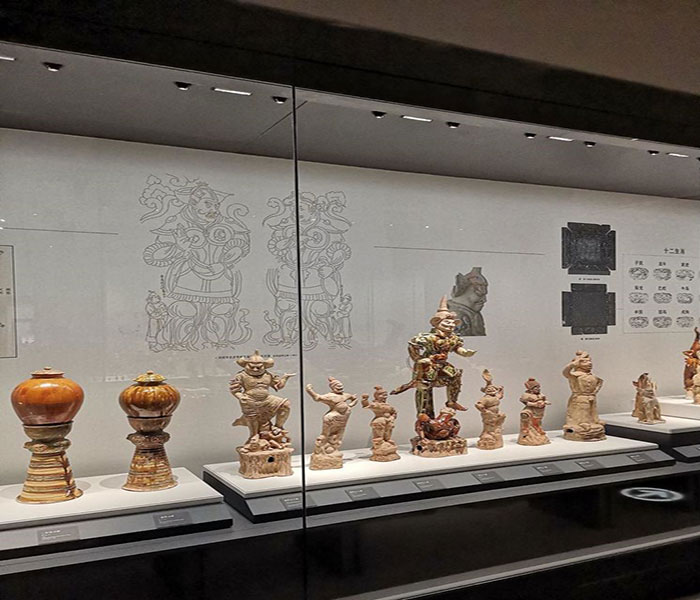In the retail and display industry, showcase glass is not only a barrier to protect merchandise, but also an important element to enhance its display. Choosing the right display case glass can enhance the appeal of your merchandise while ensuring safety. In this article, we will discuss how to choose both safe and beautiful display case glass.
I. Safety considerations of display case glass Safety is the primary consideration when choosing display case glass.
Strengthened glass: Provides extra strength, even if broken is not easy to fall apart.
Laminated glass: Even if broken, the PVB film in the middle can keep the fragments from scattering.
Bullet-proof glass: Used on occasions that require a high level of security, such as jewelry shops or museums.
Second, the aesthetics of the showcase glass requirements aesthetics directly affect the customer's impression of the goods.
Transparency: High transparency of the glass to make the goods show more clearly.
Reflectivity: Low reflective glass reduces glare and improves the visibility of products.
Color and texture: Coloured or textured glass adds personality and style to the display.
Third, the different types of display glass Introduction to understanding the characteristics of different types of display glass helps to make a more appropriate choice.
Clear glass: The basic type, suitable for display needs.
Tinted glass: provides different visual effects, suitable for specific themes of the display.
Mirrored Glass: Reflective properties can be used to enhance a space or to highlight specific products.
Frosted glass: provide privacy, while maintaining a certain degree of light transmission.
Fourth, the functionality of the showcase glass selection Functionality is a modern showcase design that can not be ignored.
Ultraviolet protection: Prevents color fading when goods are exposed to ultraviolet rays for a long time.
Temperature-controlled glass: suitable for display environments that require specific temperature control.
Intelligent dimming: Adjust the transparency of the glass by electric control or light control.
V. Design and Installation Considerations Factors to be considered during the design and installation phase to ensure the desirable results for the showcase glass.
Accurate size: Ensure the precise fit between the glass and the showcase frame.
Edge treatment: Smooth edge treatment to prevent customer injury.
Stable installation: Use appropriate fixings to ensure that the glass is firmly installed.

Sixth, the importance of maintenance and cleaning of the correct maintenance and cleaning methods to maintain the transparency and aesthetics of the showcase glass.
Regular cleaning: Clean regularly to remove dust and fingerprints.
Use appropriate cleaning agents: avoid using cleaning agents that may damage the glass surface.
Avoid scratching: Avoid scratching with hard objects in the process of cleaning and maintenance.
VII. Cost-benefit analysis In the choice of display case glass, you need to consider the balance between cost and benefit.
Budget planning: according to the budget choose the right type and thickness of glass.
Long-term investment: high-quality glass, although the initial cost is higher, durability, and low maintenance costs.
Cost of customization: Customising glass with special colors or textures may increase costs.
Environmental Adaptability and Sustainability When choosing display case glass, consider its adaptability and sustainability to the environment.
Energy-saving features: Choose a glass that reduces energy consumption, such as insulated or thermal glass.
Recyclable materials: Choose a glass that uses recyclable materials to reduce environmental impact.
Environmental certification: Choose glass products that have passed environmental certification.
IX. Case Study: Successful application of display case glass By analyzing successful cases, we can understand the effect of display case glass in practical application.
Jewelry display: how to use laminated glass to protect high-value goods.
Art exhibitions: using low-reflective glass to display paintings and reduce glare.
Retail environments: combining lighting and tinted glass to create an attractive shopping experience.
Looking to the future, there are trends and potential innovations in display case glass.
New materials: Explore the use of new materials such as ultra-thin glass or nano-coated glass.
Intelligent: Combine sensors and smart technologies to provide an interactive display experience.
Personalization: Provide more customization options according to customer needs.
Choosing the right display case glass can enhance the attractiveness and presentation of merchandise while ensuring display safety. By considering safety, aesthetics, functionality, cost-effectiveness, and environmental adaptability, retailers can create a shopping environment that is both safe and appealing to customers. As technology continues to advance, the future of display glass will be more diverse and intelligent, bringing more innovation and possibilities to the retail and display industry.






